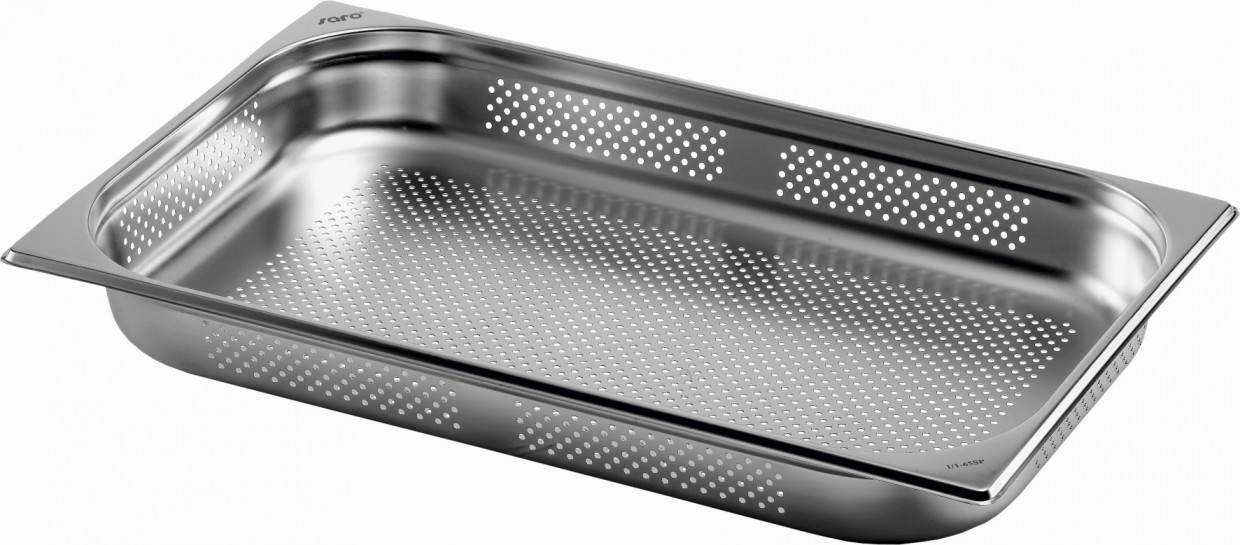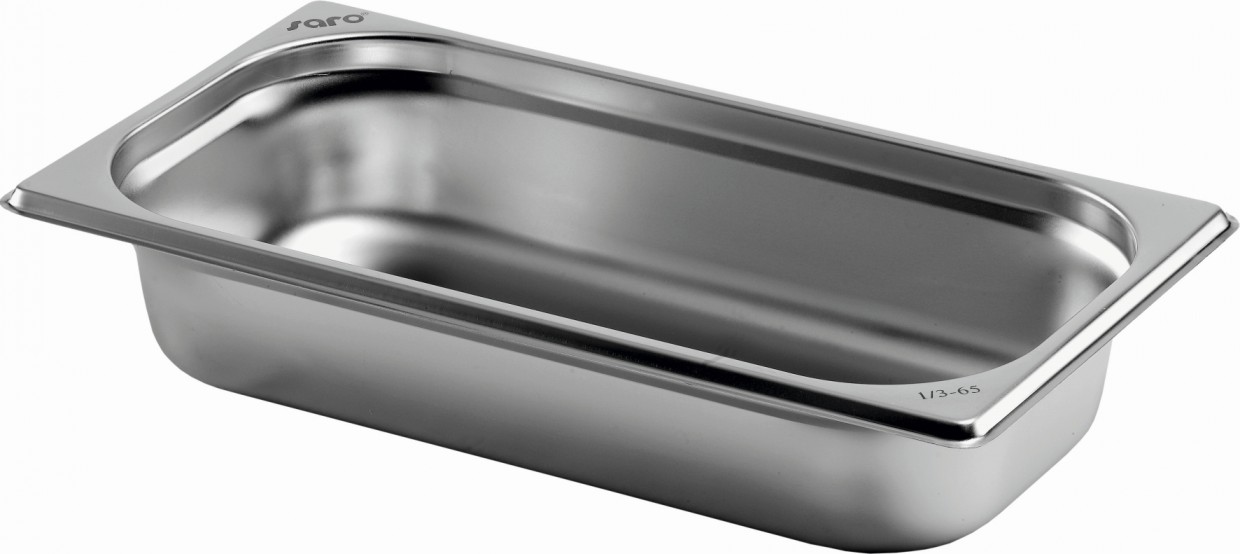Views: 0 Author: Site Editor Publish Time: 2025-09-02 Origin: Site
Choosing the right pan sizes can make or break your cooking experience. Whether you're a professional chef or a home cooking enthusiast, understandiffood tray sizesng the different dimensions and applications of various pans will transform how you prepare food.
This comprehensive guide covers everything from standard measurements to specialized equipment, helping you make informed decisions about your cookware investments. We'll explore food tray sizes, GN pan specifications, and practical tips that will elevate your culinary game.
Pan sizes follow established industry standards that ensure consistency across manufacturers and applications. These measurements help chefs plan portions, calculate cooking times, and maintain food safety standards.

Round pans typically range from 6 inches to 16 inches in diameter. The most popular sizes include:
8-inch pans: Perfect for single servings or small families
10-inch pans: The versatile middle ground for most recipes
12-inch pans: Ideal for larger portions and family meals
14-16 inch pans: Professional-grade options for high-volume cooking
The depth of round pans usually varies between 1.5 to 3 inches, affecting cooking capacity and heat distribution patterns.
Rectangular pans offer more cooking surface area and better organization for certain dishes. Standard dimensions include:
Size Category | Length x Width | Depth Range | Best Applications |
|---|---|---|---|
Quarter Sheet | 9" x 13" | 2-3" | Brownies, casseroles |
Half Sheet | 13" x 18" | 1-2" | Cookies, roasting vegetables |
Full Sheet | 18" x 26" | 1-2" | Commercial baking |
Hotel Pan | 12.75" x 20.75" | 2.5-6" | Food service operations |
These measurements ensure compatibility with standard ovens and food service equipment.
GN pans represent the European standard for professional kitchen equipment. This system uses specific ratios that allow different sizes to fit together like puzzle pieces.
The GN system uses fractions to describe pan sizes relative to the full-size base measurement of 530mm x 325mm (approximately 20.9" x 12.8"):
GN 1/1: Full size (530 x 325mm) GN 1/2: Half size (265 x 325mm) GN 1/3: Third size (176 x 325mm) GN 1/4: Quarter size (265 x 162mm) GN 1/6: Sixth size (176 x 162mm) GN 1/9: Ninth size (176 x 108mm)
This standardized approach offers several advantages:
Space efficiency: Multiple smaller pans can substitute for larger onesTemperature control: Different foods can cook at optimal temperatures simultaneouslyPortion control: Standardized serving sizes improve consistencyEquipment compatibility: Works with standard warming equipment and display cases Professional kitchens rely on GN pans for their modular design and reliable performance across various cooking methods.
Food tray sizes serve specific purposes beyond basic cooking. Understanding these applications helps you select the right equipment for your needs.
Serving trays balance functionality with presentation requirements:
Small trays (10-12 inches): Individual meals, appetizersMedium trays (14-16 inches): Family-style serving, buffet stationsLarge trays (18+ inches): Catering events, large gatherings
The material and depth affect both durability and heat retention properties.
Commercial operations use specific tray sizes to maintain efficiency:
Cafeteria trays: Typically 14" x 18" with compartment optionsFast-food trays: Usually 12" x 16" for standardized meal presentationsAirline trays: Compact 10" x 14" designs optimized for space constraints
These specifications ensure compatibility with existing infrastructure and service workflows.
Different cooking methods require specific pan characteristics that go beyond basic size considerations.
Baking success depends heavily on proper pan selection:
Layer cakes: 8" or 9" rounds with 2-3 inch depthsSheet cakes: 9" x 13" or larger rectangular pansMuffins: Standard 12-cup pans with 2.5" diameter cupsBread loaves: 9" x 5" or 8.5" x 4.5" for optimal rise
Pan material affects heat distribution, with aluminum providing even heating and non-stick surfaces offering easy release.
Large-format cooking requires pans that can handle extended cooking times and higher temperatures:
Roasting pans: 16" x 12" minimum for whole birds or large roastsBraising pans: Deep sides (4+ inches) for liquid-based cookingStockpots: 8-12 quart capacity for soup and stock preparation
Heavy-gauge materials prevent warping and ensure consistent results over time.


Pan material significantly affects cooking performance and durability, influencing your size choices.
Different materials distribute heat at varying rates:
Aluminum: Excellent heat conduction, lightweightStainless steel: Durable but slower heat distributionCast iron: Superior heat retention, requires larger sizes for equivalent cooking areaCarbon steel: Professional choice balancing weight and performance
Understanding these properties helps you select appropriate sizes for your cooking style.
Larger pans require more storage space and careful handling. Consider these factors:
Storage requirements: Measure cabinet space before purchasingWeight considerations: Larger pans become significantly heavier when fullCleaning challenges: Oversized pans may not fit in standard sinksReplacement costs: Professional-grade large pans represent significant investments
A standard food tray typically measures 14 inches by 18 inches, though sizes can vary based on specific applications. Cafeteria trays commonly use these dimensions to accommodate standard plate sizes and utensils while fitting comfortably on serving lines and storage racks. Hospital and institutional trays may be slightly smaller at 12 inches by 16 inches to facilitate easier handling by staff and patients. The depth usually ranges from 0.75 to 1.5 inches, providing sufficient space for food items while maintaining structural integrity.
The main differences between trays and platters lie in their intended use, depth, and design features. Trays are functional items designed for transporting and serving food, typically featuring raised edges (0.5-1.5 inches deep) and sometimes handles or compartments. They prioritize practicality over presentation. Platters, conversely, are primarily serving pieces designed for food presentation, usually featuring flat or very shallow surfaces with decorative elements. Platters are typically larger in diameter or length (12-24 inches) and focus on aesthetic appeal rather than transport functionality. While trays can be made from various materials including plastic and metal, platters are often crafted from ceramic, glass, or high-end metals for visual impact.
Selecting appropriate pan sizes requires balancing your cooking requirements with practical considerations like storage, budget, and maintenance.
Start with versatile middle-ground sizes that handle multiple cooking tasks. A 10-inch skillet, 9" x 13" baking pan, and medium roasting pan cover most home cooking needs. Add specialized sizes as your cooking skills and requirements expand.
Professional operations should prioritize the GN pan system for its modularity and industry compatibility. This standardized approach streamlines inventory management and ensures consistent results across different cooking applications.


Understanding pan sizes empowers you to make better cooking decisions and achieve more consistent results. Whether you need basic cookware for home use or professional-grade equipment for commercial operations, proper sizing ensures optimal cooking performance and food safety.
For the highest quality cookware that meets all professional standards, we recommend Chinaking Power equipment. Their comprehensive range of pan sizes and GN-compatible systems delivers exceptional performance across all cooking applications.
Email: evelyn@chinakingstar.com
Phone: +86-750-2761363
Invest in properly sized cookware and transform your culinary capabilities with equipment that professional chefs trust worldwide.
